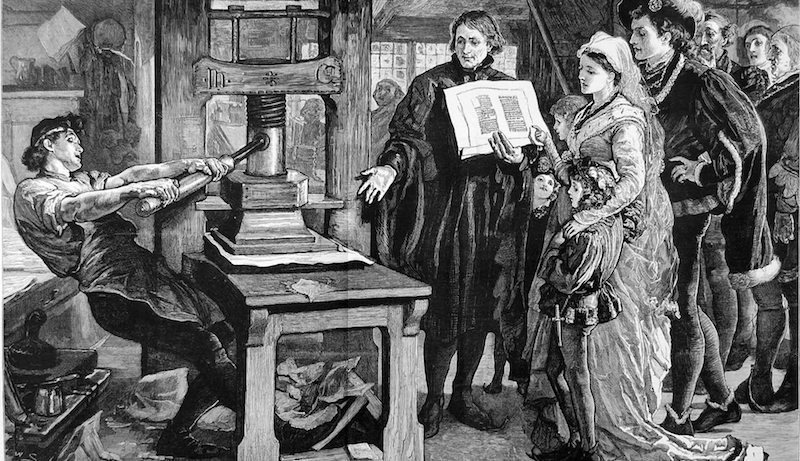Printing Press
Episode #3 of the course “Inventions that changed the world and their stories”
For more than 1,000 years, 15th-century Europe had been dominated by the church and a society that valued traditional wisdom. But popular thought began to change. However, with only pen and parchment to communicate, people could not spread the word very quickly. A young jeweler in Strasburg, Germany, Johann Gutenberg had an idea. He borrowed money from his friends to buy strange materials. He wouldn’t say why he needed them, or why they cost so much.
His friends decided that they would not put out more money until he told them why. They were surprised to find out that he was working on an invention to mass-produce books. After seeing Gutenberg’s new movable type, oil-based ink, and printing press in 1438, his friends were convinced and formed a partnership. However, this would not stay secret long. After a partner died, his children wanted shares in the work and sued Gutenberg. Although unsuccessful, Gutenberg’s invention became public, and the exposure started a competition to print the first book.
Gutenberg returned home to raise money to continue his work. He secured two loans from businessman Johann Fust, and by 1455, Gutenberg produced his first print book. At a nearby trade fair in Frankfurt, visitors admired the clarity of the printed work.
Gutenberg’s loans to Fust came due, but he didn’t pay them back. He faced a judge again but was not successful. Fust took everything, stole Gutenberg’s apprentice, and became the world’s first mass printer.
But Fust’s reign was short-lived; soon printers appeared throughout Europe. By 1500, printers had produced 30,000 books and stimulated idea-sharing for the upcoming period, which was later termed the Renaissance Age. Unfortunately, Johann Gutenberg’s misfortune continued. He remained a printer but never made money, and he died in 1468.
Share with friends

